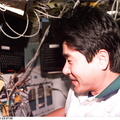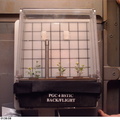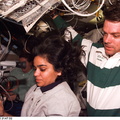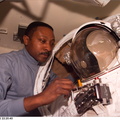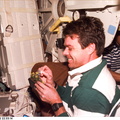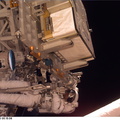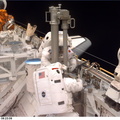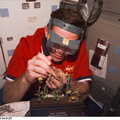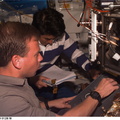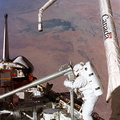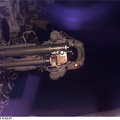
WIKIARCHIVES.SPACE
The Human Spaceflight Archive

Information
- Taken in
- Space
- Author
- NASA
- Description
- Featured in this view is the Tibesti Massif in northern Chad in central Saharan Africa is a very large mountain range of old, dark, hard rocks, which is surrounded by sand seas. The mountains are capped with recent volcanoes and volcanic flows. The volcanoes of Tibesti are similar to those of Hawaii -- they are thought to be the result of a large hot spot deep in the Earth underneath northern Africa. The most striking volcano is the Pic Tousside (3,265 meters). The lava flows down the flanks of Pic Tousside make a characteristic and recognizable shape something like a giant squid -- thus providing astronauts a key visual marker as they fly across northern Africa. Because northern Africa receives very little rainfall, the volcano and crater shapes look very “young”. The occasional rainfall has created small gullies down the sides of the mountains, which can be seen when the sunlight is relatively low. Small amounts of water leach the soluble elements, like sodium, from the lavas. When the water collects in low places, like at the bottom of craters such as Trou au Natron (the crater adjacent to Pic Tousside) and subsequently evaporates, sodium-rich deposits are left behind. The white region at the bottom of the crater Trou au Natron is a sodium carbonate (natronite) deposit. This picture is one of the 70mm Earth observations visuals used by the crew at its post flight presentation events.
- Created on
- Albums
- US SPACE PROGRAM / SPACE SHUTTLE / MISSIONS / STS-87 / Mission Photos (Edited)
- Source link
- https://www.flickr.com/photos/nasa2explore/9358698455/in/album-72157634777933463/
- Visits
- 50
- Rating score
- no rate
- Rate this photo
- License
- CC BY-NC
- Modified by WikiArchives
- No (original)
- Downloads
- 0
Powered by Piwigo
























